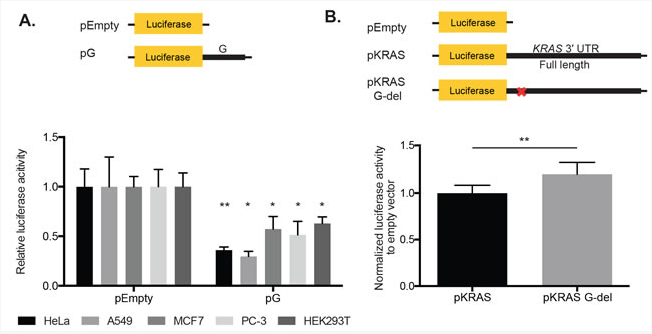Harvard Medical School Professor Frank Slack discusses his 2016 study published in Oncotarget, entitled, “Cis-acting elements in its 3′ UTR mediate post-transcriptional regulation of KRAS.”

Behind the Study is a series of transcribed videos from researchers elaborating on their recent oncology-focused studies published in Oncotarget. A new Behind the Study is released each Monday. Visit the Oncotarget YouTube channel for more insights from outstanding authors.
—
Harvard Medical School Professor Frank Slack discusses his 2016 study published in Oncotarget, entitled, “Cis-acting elements in its 3′ UTR mediate post-transcriptional regulation of KRAS.”
Professor Frank Slack
Okay. Hi there, my name is Frank Slack. I’m a professor in the department of pathology at Beth Israel Deaconess Medical Center at Harvard Medical School, and I’m the director of the newly formed Institute for RNA Medicine here at Harvard Medical School.
For the last 15 years or so, we’ve been extremely interested in studying the rules of microRNA as these small non-coding RNAs, and under control of key oncogenes in cancer. And one of the oncogenes that we’ve spent a lot of time studying over the past 10 years or so, is the oncogene, KRAS. A few years back, we showed that it looked like KRAS had an extremely long 3′-UTR relative to the rest of the coding sequence of the messenger RNA, suggesting that it was subjected to a lot of microRNA control. And we were able to show that certain microRNAs do indeed regulate the expression of KRAS.

In this new work, we took a reductionist approach and we deleted portions of the KRAS 3′-UTR and identified what we thought are key negative and positive regulatory elements within the KRAS 3′-UTR.
One of the major findings of this paper is that, one of these regions that we deleted that looked like it was required for negative regulation of the KRAS expression, looks like it falls within a microRNA binding site to the microRNA, miRNA-185. When we deliver miRNA-185 to cells, we can repress the levels of KRAS. We can also show that we could repress the levels of a recorded gene that’s under the control of the KRAS 3′-UTR.
So miRNA-185 has emerged for us as an important new regulator of this extremely important oncogene. It’s our hope that we can take these basic science discoveries and translate them into potentially new methods for regulating KRAS in cancer.
Many people know that KRAS has mutated in about a quarter of all lung cancers and many other types of cancer, including about 95% of pancreatic cancers. We hope then that miRNA-185 might emerge as a new potential therapeutic option when delivered into lung or pancreatic cancer patients that could suppress the levels of activated KRAS, and therefore be therapeutic in that disease.
Click here to read the full study published in Oncotarget.
—
Oncotarget is a unique platform designed to house scientific studies in a journal format that is available for anyone to read—without a paywall making access more difficult. This means information that has the potential to benefit our societies from the inside out can be shared with friends, neighbors, colleagues and other researchers, far and wide.




